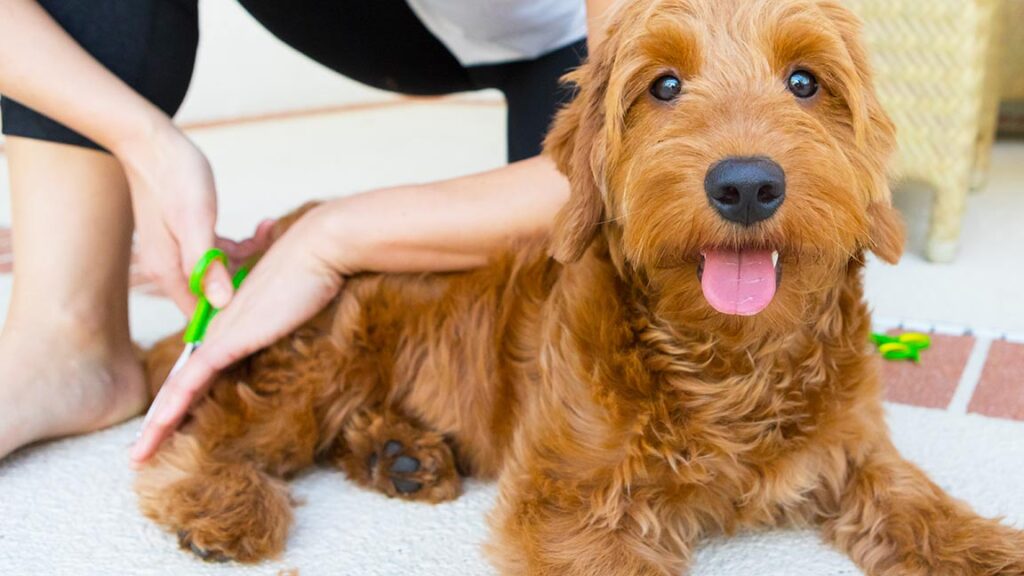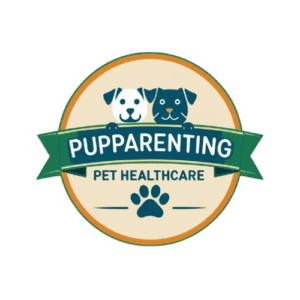When it comes to dogs like doodles, grooming isn’t just a one-time task—it’s part of caring for their coat, hair, and fur every day. I’ve had a puppy whose wavy and later tight curls made brushing both a fun and challenging job. As the hair grew and changed, I learned that doodles need regular care to avoid matted hair. Whether you use clippers, scissors, or a combination, your DIY approach can work if you invest the time, hours, and some patience. Watching Youtube tutorials helped me understand how to handle low-shedding designer dogs without creating a messy or irresponsible scenario. One of the biggest problems I faced was balancing high maintenance coats with a tight budget while ensuring my dog’s coat stayed maintained and pretty.

Dogs with high maintenance coats often struggle with shedding and curls, especially when the poodle part of their genetics kicks in. You might see recurring themes in Facebook groups, where people share their struggling with grooming experiences. Some even feel like a guinea pig trying different techniques. But with the right tips, a consistent schedule, and a clear voice guiding your intentions, grooming can become an enjoyable part of your routine. Reading through comments and threads from other owners helps anticipate problems before they occur. Properly bathed, brushed, and maintained, your doodle coat will thrive, turning hours of work into a rewarding part of raising a healthy and happy dog.
When to go to the groomer
Knowing when to take your dogs or doodle to the groomer can save a lot of problems with grooming and coat care. I’ve learned from my own experience and through Facebook groups that even if you love DIY care, sometimes a professional groomer is the best choice. When your doodles have matted fur, need a haircut, or require a poodle cut or teddy bear look, it’s smarter to invest in their expertise. Groomers have the right tools, resources, and know-how to cut, trim, or shave your pup safely and faster than most owners can at home. If you are unsure about the style, you can show pictures and make your expectations clear, but remember they aren’t miracle workers—sometimes even the best groomer can’t salvage extremely matted fur, and it may take try again sessions.
For routine dogs’ care, groomers are useful for long or fluffy hair, locks, or fur that grows quickly and is hard to manage. A good recommendation is to take your specific dog for proper care when appearance and coat care are important. Even if your puppy seems fine at home, stubbornness or lack of time can make DIY grooming risky. Paying money for a professional groomer helps ensure your dog looks beautiful and enjoyable while keeping coat and fur healthy. Don’t worry if something goes wrong—the right groomer can guide you on what type of cut or style suits your dog and teach you how to maintain it in between visits.
DIY Doodle Cuts
Doing DIY grooming at home can be a rewarding way to take care of your dog or doodle if you have the right tools and process. I remember when I first tried trimming Reagan’s hair—switching from scissors to cheap clippers felt horrible, but when I finally decided to invest in good clippers, it was like a hallelujah chorus from the heavens. Watching Youtube videos helped me understand safe grooming, teaching me step by step how to cut, trim, and style her coat properly. Following a guide or free download can make the process smoother and keep expectations realistic so your DIY grooming can turn out better than expected.
When you groom your dog at home, it’s important to watch your technique and take your time to safely handle clippers and scissors. Creating your own step by step routine allows you to style your doodle as you like, while keeping sanity intact. Even if your past life experiences with grooming were chaotic, learning to do it on your own can be better and more enjoyable, giving you a sense of achievement. With practice, your dog’s hair can feel like butter, and you’ll thank you for the effort, knowing your home grooming skills are improving safely and consistently.
Brushing
Brushing your dog or doodle is more than just a grooming task—it can become a relaxing activity for both you and your pup. I learned this while taking care of Reagan; using a slicker brush and a dematting comb made handling matts and matted hair much easier. Working gently, starting from the base and moving outside inward, prevents yanking and keeps the coat and fur healthy. Doing this everyday in the evening can turn into a pleasant habit, a bright spot in your routine where the family can be involved and share the effort.
Brushing isn’t just about removing matts; it’s about bonding and creating a productive, restful, and satisfying moment. Setting up a decent area, watching TV while brushing, and taking the time to learn proper technique can make the work enjoyable. Over time, your dog will come to enjoy these sessions, and you’ll notice that keeping their coat groomed becomes easier. With the right advice, tools, and forward planning, brushing can be your dog’s best friend as much as it is yours.
Bathing
Giving your dog or doodle a bath is an important part of grooming to keep their coat and fur clean, healthy, and pleasant to pet. I’ve learned through practice that wet hair can easily form matts and tangles, so frequent bathing with conditioner helps keep their hair soft and smooth. After a bath, a proper rinse is essential to avoid dried soap, which can lead to skin problems. Using a blow dry technique or letting the hair dry naturally ensures the coat stays good smelling and avoids problems.
Even if you only give your doodle an occasional bath, taking the time to follow the right lessons and tips will make bathing less stressful. Watching Youtube tutorials and learning proper techniques helps make the work out fine, and you’ll notice the wonders of a soft, healthy, and smooth coat. With careful keeping of the hair, dried fur can be avoided, and the dog will enjoy the pleasant experience while staying clean and comfortable.
nails, ears, and tails
Taking care of your dog or doodle goes beyond brushing their coat—their nails, ears, and tails need special care too. I remember a childhood memory with Dad accidentally clipping a Dalmation’s toenail too short—it yelped, and we had to be very cautious and careful ever since. When clipping nails, always work in small sections, knowing the blood supply and using lighter colored nails as a guide. Using a nail grinder is another option if your dog tolerates it. The fun part of grooming can be brushing, but the not so fun areas like nails, ears, and tails are just as important for maintenance.
Being aware of these sensitive areas ensures your dog stays safe and comfortable. Always take care and remember to work slowly, side of caution, and tentative when clipping or cleaning. Trust your instincts, but if you need to go that route, don’t hesitate to ask a groomer for advice. Keeping ears clean and tails trimmed along with nail maintenance makes the overall grooming process smoother. With proper care, your doodle will enjoy the routine and your efforts will turn into a positive bonding experience.
Ears
When grooming your dog or doodle, paying attention to their ears is essential, especially for low shedding dogs whose hair can grow in tricky places. Ears can catch dirt, which may lead to infection or irritation, so it’s important to keep them clean and plucked when needed. Regular care and maintenance of the ear area helps prevent problems and supports healthy growth of hair around the coat. These simple steps mean that your dog stays comfortable, and you avoid potential issues while grooming, ensuring both ears and the rest of the coat remain in top condition.
Tail
Caring for your doodle’s tail is an important part of grooming, especially since hair can grow in abundance and sometimes get clumped. Regular trimming helps keep the coat clean and prevents discomfort. Whether you choose to take care of it on your own with latex gloves or rely on a groomer or vet, following the right steps and guide, like the free guide “Groom Your Doodle,” ensures that your dog’s tail stays neat and healthy. This is especially true for Poodle cross, -Doodle, or -Poo breeds that have high maintenance coats and more grooming requirements than the average dog.
Taking care of the tail is not just about appearance. When maintained regularly, it prevents excessive shedding, shed hair buildup, and keeps your dog glad and comfortable. Ignoring it can make grooming stressful, especially for easily stressed or poorly socialized dogs. Whether your groomer is closed or you are in between appointments, understanding the reasons for proper care—including medical reasons or extended travel—helps you keep the coat professionally cleaned, well cut, and in line with your dog’s grooming requirements, bringing joy to both family and dog.
How to groom a doodle step by step?
Step-by-Step Grooming Process
- Line Brush. Here’s where most people mess up: they skip the pre-brush. …
- Bathe the Dog. Goldendoodles are basically dirt magnets, especially if yours loves outdoor adventures. …
- Dry Your Pet With an Absorbent Towel. …
- Scissoring and Trimming. …
- Brush Your Doodle’s Teeth. …
- Finish Up.
What kind of grooming do doodles need?
Doodles need consistent grooming to keep their coat healthy and tangle-free. Their hair should be brushed or combed thoroughly at least every other day to prevent matts and maintain a soft texture. Regular baths at home with premium shampoo and conditioner, both before and after grooming sessions, help keep the coat clean and shiny. Some owners schedule professional grooming appointments in between home care to groom the dog properly, while others decide to use only home care. The key is to brush and comb the doodle out completely each time, making sure their dogs are comfortable and well-maintained.
What is the best tool for grooming goldendoodles?
The main tools for grooming your doodle or dogs are a slicker brush and a steel comb, which are both handy for keeping the coat healthy. A slicker brush is great for brushing and fluffing the outer coat, giving it a soft, fluffy look. You can do a quick run over the coat to make sure all tangles are removed, then follow with the steel comb to smooth out the hair completely. Using these tools regularly helps groom your doodles efficiently while keeping their dogs comfortable and the coat looking its best.
What are common Goldendoodle grooming problems?
Goldendoodles and doodles often face grooming challenges that are commonly caused by post-haircut sessions. After a haircut, dogs can develop rash or irritation on their belly due to skin sensitivity or allergic reactions from clippers or grooming products. My experience has shown that proper groom techniques and gentle handling after each session can reduce these results, keeping dogs comfortable and their coat healthy, while preventing issues that may arise after grooming.
Is it better to brush a doodle wet or dry?
Make sure that their coat is fully dry before moving forward. Like humans, wet hair shrinks, and you may accidentally cut your Goldendoodle’s hair too short if wet.

Pingback: Top dog-friendly walking routes in the UK